The Australian Bureau of Statistics (ABS) reported last week that net overseas migration rocketed to a record high 454,300 in the year to March 2023, which lifted the population by 563,200:
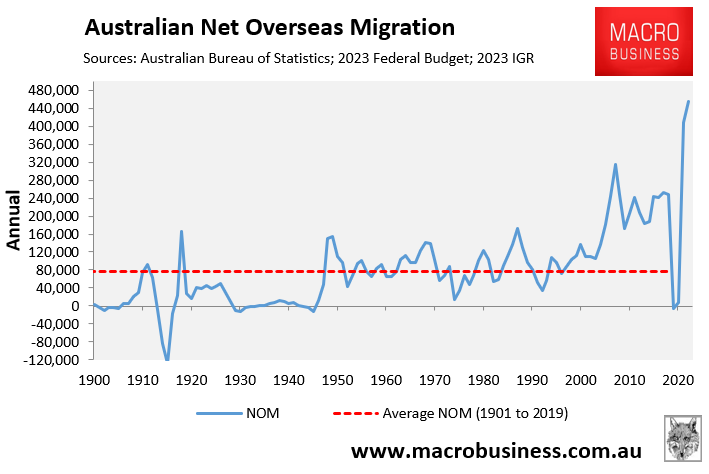
The June quarter national accounts also suggested that Australia’s population ballooned by 626,000 over the 2022-23 financial year:
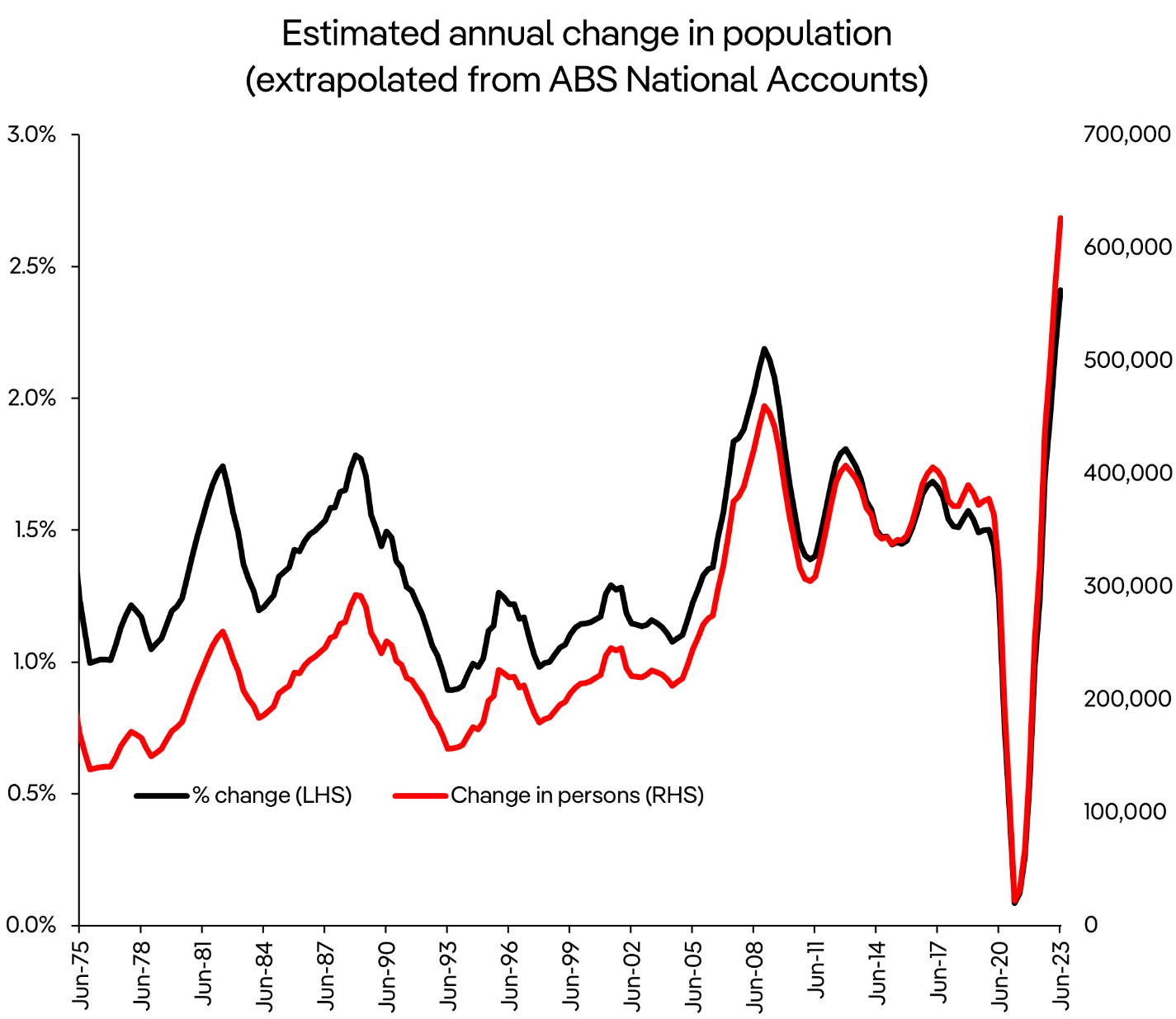
The unprecedented boom in immigration was celebrated by immigration minister Andrew Giles, who took to Twitter recently boasting that his department had approved record numbers of visa applications:
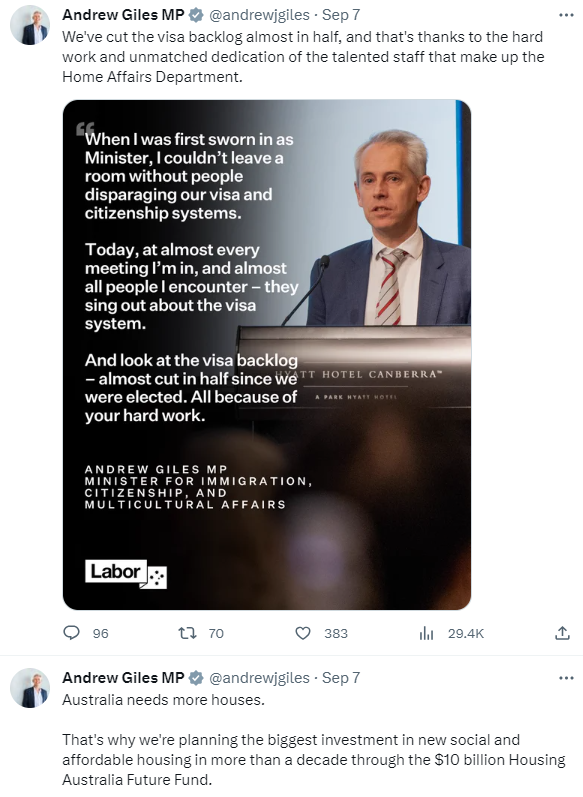
Giles made the same boast in December 2022 when he claimed the government had nearly halved the visa backlog by rubber stamping applications at a furious pace:

“By ramping up processing in the Department of Home Affairs and hiring over 400 extra staff, I’m proud to say that we have now processed over 4 million visas since coming to Government”, Giles said.
Clearly, the fake “visa backlog” is being used by the Albanese Government as an excuse to flood the nation with record numbers of migrants.
Meanwhile, with the population growing by 2,000 a day, Australia’s housing crisis continues to worsen. This is encapsulated in the next chart from AMP chief economist Shane Oliver:
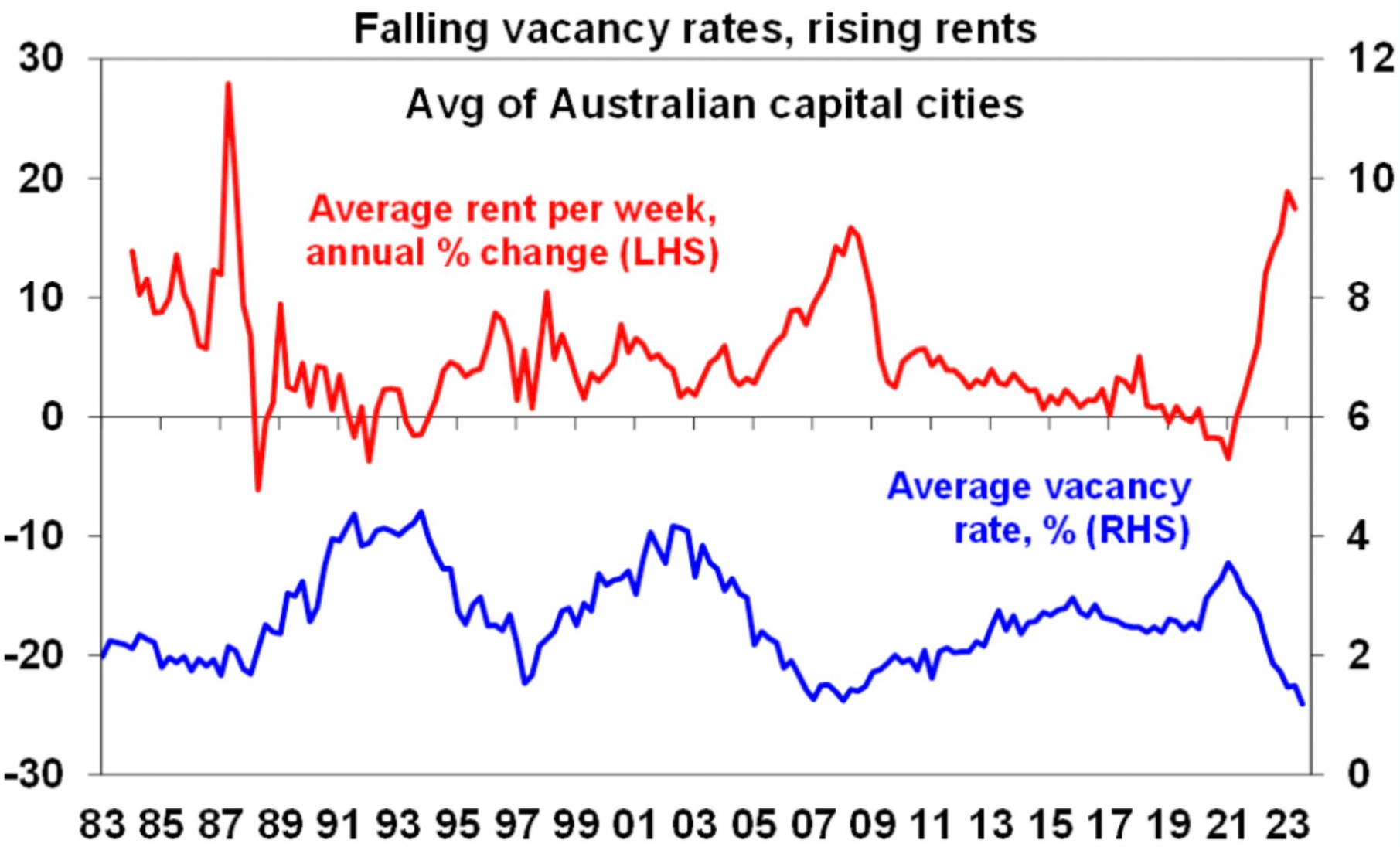
Source: Shane Oliver (chief economist at AMP)
The rental vacancy rate has plummeted to a record low, while rents are rising at a rapid pace.
In turn, tenants are being plunged into deep financial stress, while Australians are being forced into group housing or becoming homeless.
Last week, Andrew Giles was challenged by ABC RN Breakfast host, Hamish MacDonald, who asked where the migrants flooding Australia will live?
As usual, Giles responded with the usual blather: better planning, working with state governments, skills shortages, listening etc:
HAMISH MACDONALD: I’m talking to the Immigration Minister Andrew Giles. You’ll be aware, Minister, that there’s been a fair amount of criticism of increased migration numbers given the situation with the housing crisis across the country. When you do agree on or decide on the numbers, the intake each year, do you think about where people will end up living and what the implications might be for the cost of housing, whether it’s rental or purchasing?
ANDREW GILES, MINISTER FOR IMMIGRATION, CITIZENSHIP AND MULTICULTURAL AFFAIRS: Not just in individual years but across the board and, Hamish, that’s a really key feature of the Intergenerational Report which the Treasurer released a couple of weeks ago. And indeed, the work that Minister O’Neil has been doing in terms of our response to the Migration Review that was handed to government earlier this year, to make sure that we take a longer-term view of these issues. That’s something that’s critically important.
At National Cabinet a few weeks ago, there was a really important agreement reached between the federal government and all states and territories to look at working more closely together to ensure that migration and infrastructure issues, including most importantly housing, are working together. Something that hasn’t been happening in the past.
HAMISH MACDONALD: But that might be the longer term, what about in the immediate term when you are lifting the caps?
ANDREW GILES, MINISTER FOR IMMIGRATION, CITIZENSHIP AND MULTICULTURAL AFFAIRS: Well across the board we’ve got to do both. We’ve got to respond to immediate challenges. Challenges in the Labor market like the one we’ve just been talking about, Hamish, where we have really significant skill shortages in a range of key sectors. And we’ve also got enormous cost‑of‑living pressures, and of course getting our immigration settings right, a really critical response to that too.
HAMISH MACDONALD: Respectfully, Minister, I’m asking you about your government and what you’re doing, and I do want to go to that short‑term solution. When you are encouraging people to come into the country, whether it is to fill those worker shortages or otherwise, do you have an idea of where they will end up living? I mean is there actually a plan in place for those people?
ANDREW GILES, MINISTER FOR IMMIGRATION, CITIZENSHIP AND MULTICULTURAL AFFAIRS: Well there is and one of the things that we have done, for example, is to triple the number of regional places in the intake over the two years that we have been handing down the migration program. Again, we’re working with the states. And of course when it comes to housing, one thing anyone can do is to encourage members of the Opposition, members of the Greens to get behind Minister Collins’ work on the Housing Affordability Future Fund, which would be delivering 30,000 houses a year, as well as the other measures that have been put in place. We’ve got to look at all of these things, Hamish.
HAMISH MACDONALD: But that’s a long‑term or mid‑term at least solution to the housing crisis in Australia. Again, I just draw you to the immediate term. Where would these people live?
ANDREW GILES, MINISTER FOR IMMIGRATION, CITIZENSHIP AND MULTICULTURAL AFFAIRS: Well in the immediate term we also need people with the skills to build houses. That’s a message that has been consistently delivered to me by industry and by the states and territories. That’s why we’ve ‑ there isn’t a silver bullet to this, Hamish. It’s about looking at all of these issues and in their context. There are of course fewer people in Australia today than any budget projection under the previous government, if we go back to 2019 in particular, indicated there would be.
This is a complex series of challenges where we have to look at the immediate term, as you say, but we also must plan for the future.
So basically, there is no plan. Moreover, nobody believes the Albanese Government’s 1.2 million housing target has a snow flake’s chance in hell of being achieved:
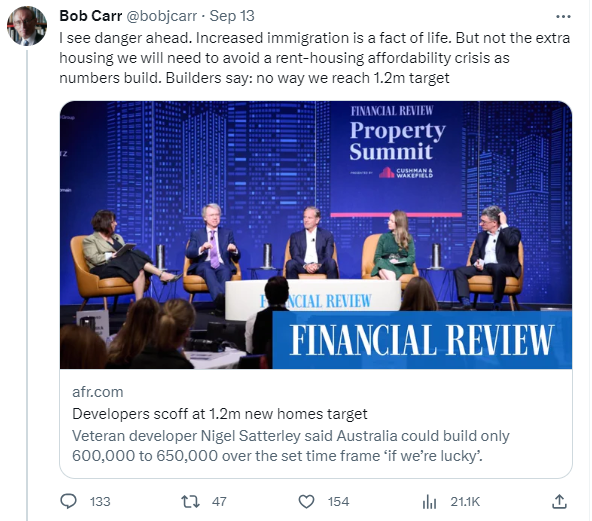
For example, developer Nigel Satterley told the recent AFR Property Summit that only half of those homes would be finished – between 600,000 and 650,000, “if we’re lucky”.
In a similar vein, developer Tim Gurner told the Summit “I think we are going to have a housing crisis like we’ve never seen before coming”.
The Albanese Government is gaslighting the public about the housing crisis while it is deliberately running the largest immigration program in history and making the situation worse every day.

